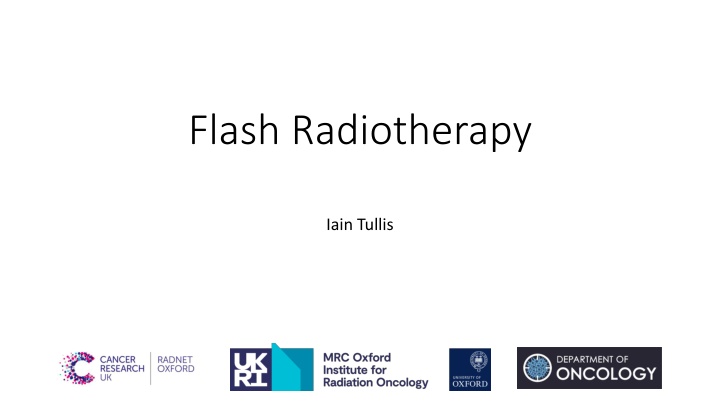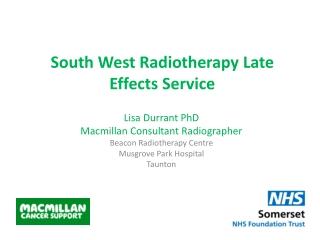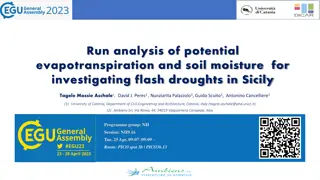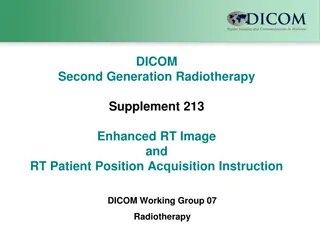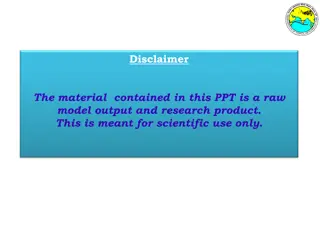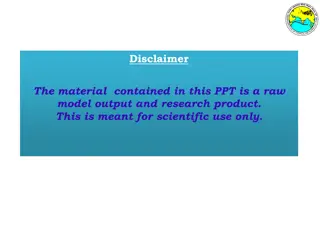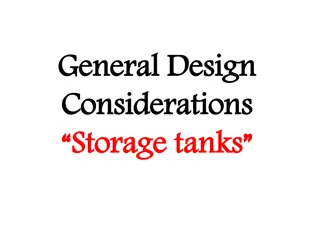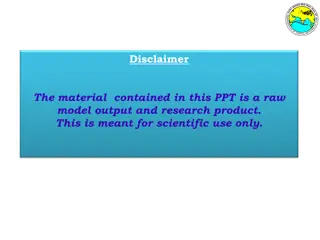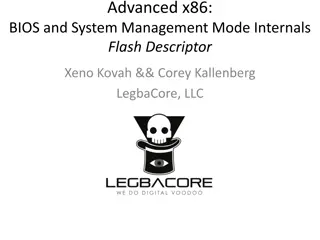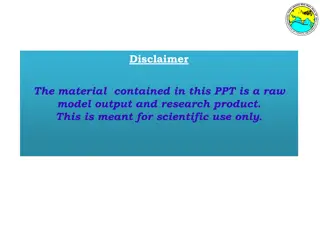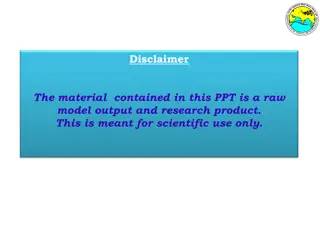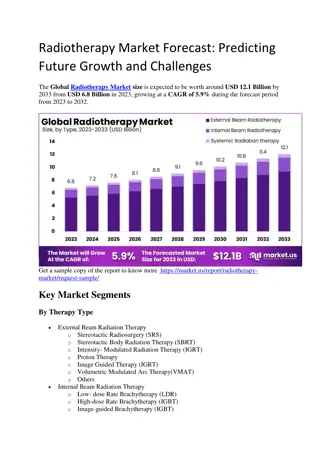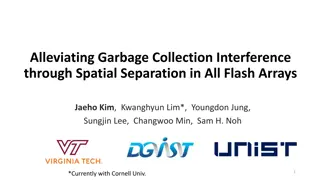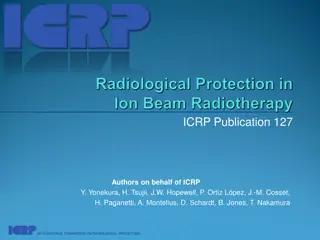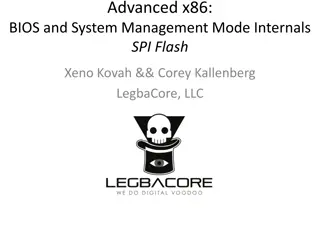Flash Radiotherapy
The BFR report opens to a summary page with important instructions for entering projected expenditures for each program year. It showcases the process of calculating values and provides guidance on managing variances in forecast amounts. Attachments can be added to support projections once all data is entered.
Download Presentation

Please find below an Image/Link to download the presentation.
The content on the website is provided AS IS for your information and personal use only. It may not be sold, licensed, or shared on other websites without obtaining consent from the author.If you encounter any issues during the download, it is possible that the publisher has removed the file from their server.
You are allowed to download the files provided on this website for personal or commercial use, subject to the condition that they are used lawfully. All files are the property of their respective owners.
The content on the website is provided AS IS for your information and personal use only. It may not be sold, licensed, or shared on other websites without obtaining consent from the author.
E N D
Presentation Transcript
Flash Radiotherapy Iain Tullis
Why the big interest in FLASH? Radiation delivered at ultra-high dose rates (FLASH) Potential Benefits for Radiotherapy: Enables full treatments (or fractions) in a few hundreds/tenths of a second No motion during treatment Less normal tissue exposed to the treatment dose Favaudon et al, Science Translational Medicine 2014
Why the big interest in FLASH? Pre-clinical studies show: Less normal tissue toxicity, i.e. the FLASH effect Dose modifying factor: 1.1-1.5 Dose modifying factor = the ratio of the FLASH dose to the conventional dose rate dose, both resulting in the same assay end point. Vozenin et al. Clin Oncol (R Coll Radiol). 2019 Wilson et al, Frontiers in Oncology, 2020
Why the big interest in FLASH? Challenges to meet before clinical implementation: What specific beam parameters that induces a FLASH effect What environmental conditions affect the response What are the radiobiological mechanisms involved
Why the big interest in FLASH? To maximise the therapeutic index more preclinical work needed Need to understand when/why we get 0% sparing (tumours), 10-20% sparing or 30-50% sparing of normal tissues? Can we increase the therapeutic index further, e.g. by combining FLASH radiotherapy with immunotherapy
Why the big interest in FLASH? What are the optimal beam parameters for the FLASH effect?
Average (Mean) Dose Rate Total Delivery Time
Normal tissue toxicity 10 Gy Whole Brain Irradiation in mice Novel Object Recognition test: 2 Months post RT T=0.1 s Recognition Index (%) Recognition Index (%) Recognition Index (%) T=0.5 s 100 Gy/s (n=12) Control (n=7) 1 Pulse (n=13) 0.1 Gy/s (n=13) 30 Gy/s (n=12) 3 Gy/s (n=7) 1 Gy/s (n=7) 500 Gy/s (n=7) 10 Gy/s (n=7) 60 Gy/s (n=5) 20 Gy/s (n=5) Montay-Gruel & Petersson et al. Radiother. Oncol. 2017
Normal tissue toxicity in mice following whole abdominal irradiation 3 days post IR 11.2 Gy Ruan et al. IJROBP 2021
0.83 0.91 1.0 1.1 1.25 1.43 1.7 2.0 (FMF) DMF B hlen et al. IJROBP 2022
Normal tissue toxicity in mice following whole abdominal irradiation 100 Conv IR % crypts remaining ** All graphs show mean with SEM. * p < 0.05, ** p < 0.01, analysed by t test (two tailed). FLASH IR * 50 Ruan et al. IJROBP 2021 Quicker delivery = better ** DMF = 1.1 DMF = 1.1 0 0 5 10 15 20 Radiation (Gy) Total dose constant 2 pulses, Dose per pulse constant, Time between varied Total dose constant, Pulse number varied time varies (100 Hz)
Normal tissue toxicity in mice following whole abdominal irradiation FLASH (63-94 Gy/s) vs. Conv Proton Therapy Diffenderfer et al. IJROBP 2020 Kim et al. IEEE 2022
Multileaf collimator and Intensity Modulated Radiotherapy (IMRT) Show slide of normal treatment Multileaf collimator IMRT Bedford et al. Radiother Oncol 2016
CT-based individualised 3D bolus and intensity modulation Konradsson et al. FRPT 2022
Fractionation? Cells are most sensitive to radiation in the cell division phase (M and late G2) Re-oxygenation Hypoxic tumour cells are less susceptible to the indirect effects of radiation. Fractionation allows time for relatively hypoxic cells to improve their oxygen supply. Repair Healthy cells have a greater ability to repair DNA damage than malignant cells. Healthy cells an opportunity to repair sublethal damage malignant with impaired DNA repair pathways are less able to recover from radiation damage to their DNA. Redistribution
Non-beam related Oxygen content Tissue-type Irradiated Volume End-point Immune status Species ...
Resources in Oxford 6 MeV electron linear accelerator Animal enclosure @ ~35 deg C Collimator + film dosimeter Electron gun Waveguide + focus RF dump Gate valve Toroidal charge monitor Energy monitor 6 MeV electron accelerator Magnetron and isolator Vacuum system Switching magnets Quadrupoles Beam exit
Beam Characteristics Oxford electron linac Bicron 400 scintillator 6 MeV electron beam homogeneous dose 0-20 mm depth, depth >30 mm no dose Maximum beam size: 50 mm Average dose rate: few Gy/min to 30 000 Gy/s Dose/pulse: mGy to >100 Gy Highly suitable for pre-clinical FLASH radiation studies! Electron beam luminescence in solid scintillator Not suitable for clinical studies! Berne et al. PMB (2021)
Summary FLASH has huge Potential Benefits for clinical translation: Enables full treatments (or fractions) in a few hundreds/tenths of a second. No motion during treatment. Could minimize treatment planned target volume margins related to motion. Less normal tissue exposed to the treatment dose.
Summary Pre-clinical studies show: Less normal tissue toxicity, i.e. the FLASH effect Dose modifying factor: (1.1) 1.2-1.5 Similar tumour control. Dose modifying factor: 1
Summary Optimal beam parameters for the FLASH effect Average (Mean) Dose rate / Total Delivery Time is a key parameter Higher / shorter Better Dose Higher larger effect (but likely levels off at a maximum) Beam scanning Higher dose rate in the scanned beam Better Pulse structure (Dose-per-pulse): Of less importance Dose conformity & Fractionation - Still very important
I. Tullis J. Ruan S. Paillas K. Petersson Oxford Team
